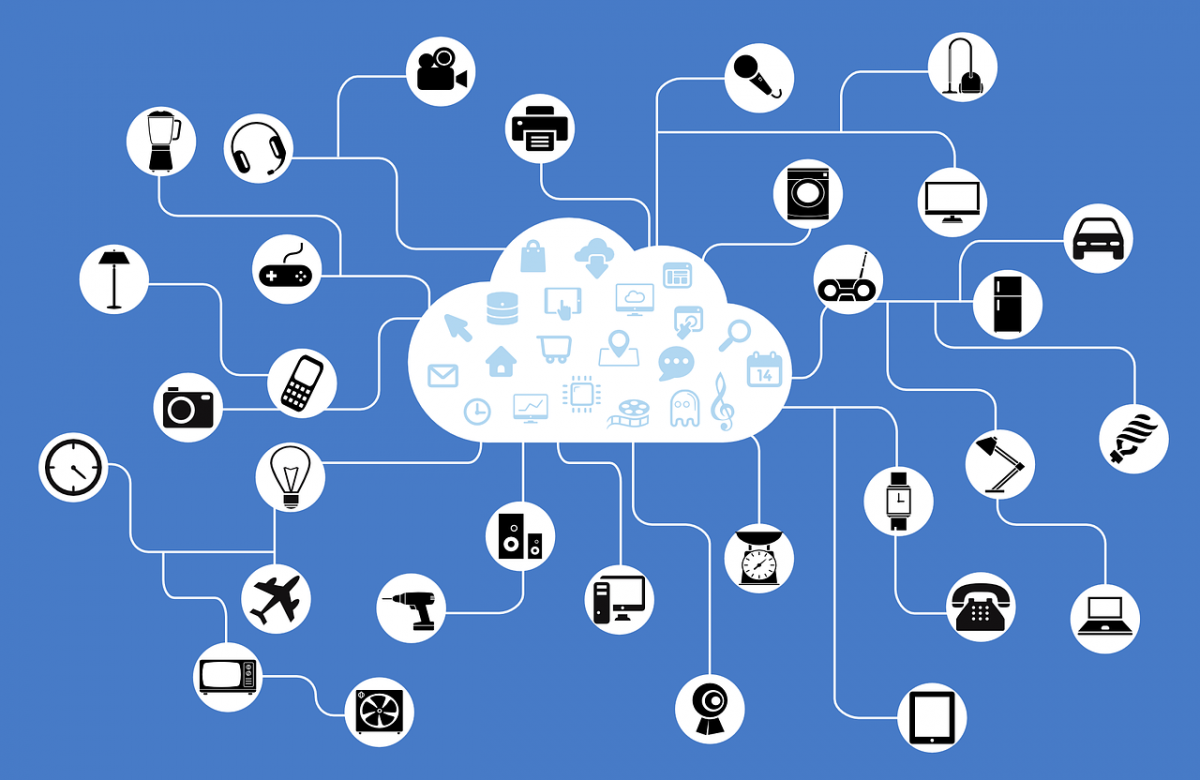Practise privacy-safe surfing: How 21st century parents can set an example for their kids by Daphne Guerrero. Available from<http://www.northumberlandnews.com/community-story/6953466-practise-privacy-safe-surfing-how-21st-century-parents-can-set-an-example-for-their-kids/> [Nov 10, 2016]
Why wouldn’t you want to share that hilarious video of little Liam lying about stealing cookies from the cookie jar when the evidence is all over his face?
And that priceless photo of Emma celebrating her first potty training success? It’s just the sort of milestone that attracts kudos and cheery chatter on your social media page.
But what will Liam and Emma think when it’s rediscovered by their peers when they hit high school? Or what if it ends up on some blogger’s viral top 10 list or is discovered by a prospective future employer?
Sharing personal mementos online with family and friends in the 21st century requires some serious forethought.
“The Net never forgets,” said Daniel Therrien, privacy commissioner of Canada. “Once you’ve posted something online, it can be very difficult to get it back.”
Recognizing that children and teens are an especially vulnerable group when it comes to the reputational harm that could come from sharing personal information online, Therrien’s first bit of advice is for parents to lead by example.
“You can’t expect your children to think before they click if you don’t,” he said. “Those funny photos of your child can be copied, shared and stuck online forever. Posting them is not unlike a friend tagging you in an unflattering or compromising photo without your permission.”
Commissioner Therrien is also urging families to create their household do’s and don’ts for surfing the web and downloading and using mobile applications together. The Office of the Privacy Commissioner of Canada recently unveiled House Rules, an interactive tool aimed at helping families do just that. The template can be downloaded from the OPC’s website.
The tool offers simple tips parents and children can customize into their very own house rules that can be printed off and posted in a common area as a reminder of how to protect privacy online.
“The House Rules tool is a great way to open a dialogue with your children about online privacy and the potential perils of oversharing personal information, whether it’s about yourself or somebody else,” Therrien said. “A key component of digital literacy is the ethical and responsible use of technology and knowing how to protect your privacy and exercise control over your personal information. It’s also about respecting the privacy of others by not sharing their photos or personal information without permission.”
Ontario’s information and privacy commissioner, Brian Beamish, tells kids and their parents to be proactive and to think before they post. Nothing is ever deleted from the Internet.
“When going online, kids should think about ‘the 7 Ps’,” said Beamish. “Parents, police, predators, professors, prospective employers, peers and pals can view their online posts. They should think about whether they are comfortable with the information they are sharing. Privacy is about freedom of choice and people can control how much personal information they post online and who has access to it.”
Another helpful resource is the OPC’s graphic novel aimed at tweens and younger teenagers. Social Smarts: Privacy, the Internet and You was created to help young Canadians better understand and navigate privacy issues in the online world.
Developed with feedback from youth, it tells the story of a brother and sister who learn — sometimes the hard way — about the privacy risks related to social networking, mobile devices, texting and online gaming.
Parents will also find a handy discussion guide that accompanies the graphic novel, which can be used to kick off a conversation about safe surfing.
Of course there’s no reason to wait until your kids are older to teach them about online privacy. A number of activity sheets available for younger children seek to explore privacy issues through mazes, colouring, connect-the-dots and other fun, hands-on activities.
“By better understanding privacy communications, children will be able to make more informed choices about the websites they visit, the apps they use and the games they play,” Therrien said. “These are skills that will benefit them well into adulthood.”
12 QUICK PRIVACY TIPS FOR PARENTS
It can be tough raising kids in a digital environment. Many of them use the Internet effortlessly, and easily adapt to new devices that connect to it. For many of us, these tools have become a routine part of our children’s lives, as they use them to chat, surf, post, play and learn. The Internet has become one of the most powerful tools they have to connect with friends and make new ones.
Many kids, however, don’t fully understand the impact that some online activities may have on their privacy. Below are 12 tips to help you limit the risks to your children’s personal information, while allowing them to make the most of their time online.
1. TALK TO YOUR KIDS.
It’s important to know the Internet spaces your kids frequent and the devices they use to go online, to help you understand the nature of personal information they may be sharing. Technology changes rapidly and many children are ahead of adults in adapting to new options. Talk with them often about their online activities to keep up with what they are doing and interested in.
2. TRY IT OUT.
It’s not enough to know what online spaces and devices your kids are using. To understand the nature of the personal information they are sharing, you should know how they are using and experiencing them. So, dive in. Try out the family web cam if you have one, play the online games they love, create a profile on the social networking sites they frequent, and download some music.
3. KEEP UP WITH THE TECHNOLOGY.
Many mobile devices, like smartphones, tablets and gaming consoles, can connect to the web and have video cameras. The lines between devices are blurring, and it is important to know what kind of device your child has, so that you know whether they are merely playing a game, or if they are using the Internet and sharing personal information.
4. MAKE RESTRICTING PRIVACY SETTINGS A HABIT.
Most social networking sites have extensive privacy options that children should learn to use. For each site where your kids are posting information about themselves, their family and their friends, sit down with them and review that site’s privacy policy. Then modify the privacy settings of their account, and have them consider how the information they are posting could be used — or misused — by others.
5. MAKE PASSWORD PROTECTION A PRIORITY.
Children need to understand that their online information will be better protected if they use passwords. They should use different passwords for different sites and they should change them regularly. Encourage them to ensure their passwords are strong (eight characters or more and a variety of letters and/or numbers), to change them regularly, and to never share them with anyone.
6. EMPHASIZE THE IMPORTANCE OF PROTECTING MOBILE DEVICES.
The first thing anyone should do with a new mobile device is activate the password protection. Talk to your kids about this, and the importance of protecting the device itself — not just because it may be expensive, but because it may contain their personal information. A device that gets into the wrong hands could result in embarrassing or even malicious videos or pictures being posted online by someone else in your child’s name.
7. REMIND YOUR KIDS THAT WHAT THEY POST ON THE INTERNET IS NOT ALWAYS PRIVATE.
Your kids should understand that once they post content online, they no longer have control over it. It can be forwarded, copied and pasted, manipulated, printed out or saved — it can remain online, in some form, potentially forever. They should know that even password-protected pages are not totally secure, and that deleting information doesn’t mean that it’s gone forever.
8. TEACH YOUR KIDS TO THINK BEFORE THEY CLICK.
It can take only seconds to snap a photo and post it to the Internet, or to post a comment. But it can be nearly impossible to permanently delete that comment or photo once it’s posted, as it can then be downloaded or archived by others. This is why it’s so important for kids to think twice about every piece of personal information before they post it to the Internet. They should only post things that they would be comfortable with the whole world seeing.
9. STRESS THE IMPORTANCE OF KNOWING YOUR REAL FRIENDS.
Kids need to know that, online, they can’t be 100 per cent sure of who they’re talking to, so they should never accept friend requests from people they don’t know in real life. Online friends can end up accessing online photo albums, reading personal comments, copying and pasting information, knowing what you’re doing and where you are. Remind your kids that a “friend of a friend” of a real-life friend is really just a stranger.
10. TEACH YOUR KIDS THAT THEIR PERSONAL INFORMATION IS VALUABLE.
Kids need to know that many people and companies want their personal information to sell or market things to them in the future. New and exciting technologies are emerging daily, but often personal information is the cost of admission. Review the personal information they often need to surrender in order to play online games, fill out an online survey or quiz, join virtual worlds or even just shop online. Discuss potential ways to limit that information, for example, by completing only required fields, using pseudonyms, and using incomplete information.
11. LET YOUR KIDS KNOW THAT YOU ARE THERE IF THEY MAKE A PRIVACY MISTAKE.
Stay calm if your child makes a mistake, like posting something they shouldn’t have. Help them remove the post, where possible, and talk with them about how they can avoid a similar mistake in the future. If you “freak out” or deny access to them, they may not come to you for help when they really need it in future.
12. SET A GOOD EXAMPLE.
Remember, those cute potty training or bathing photos of your own child that you are tempted to post can also be copied and shared, and remain online forever. Just as you would respect your friends when posting photos or other items that contain their personal information, respect your kids’ personal information too. Set a good example when you’re online so your kids have a good role model to look to if they’re wondering what kind of information is OK to post.
Practise privacy-safe surfing: How 21st century parents can set an example for their kids by Daphne Guerrero. Available from<http://www.northumberlandnews.com/community-story/6953466-practise-privacy-safe-surfing-how-21st-century-parents-can-set-an-example-for-their-kids/> [Nov 10, 2016]





